Developer: J-Force Publisher: NEC Release: 06/23/95 Genre: Action
It is not easy being a fan of a failing system. By 1993 I knew it was over for the Turbo Grafx-16 even in spite of the Turbo Duo’s release. But some small part of me was still rooting for the system. But as game after game stayed in Japan such as Rondo of Blood and Ys IV I ultimately sold it and moved onto greener pastures. It would be years later that I would revisit the system’s library to see what I missed. Renny Blaster was one of those titles that I saw in a magazine and assumed was the next Rondo of Blood. Ultimately that was not true and it turned out to be an expensive letdown. Renny Blaster has its good points but not nearly enough to justify its ridiculous price.
Renny Blaster’s low profile is due to its late release and low print run. By 1995 the PC Engine was on its last legs and releases were few. But there were some amazing titles that year such as Sapphire and Legend of Xanadu 2. Renny Blaster is not part of that club as it suffers an identity crisis. It can’t decide if it wants to be a brawler like Streets of Rage or an action platformer like Castlevania. It does both but not particularly well. If it had stayed focused all the way through it would have been solid. Instead the insane amount of money it commands is better spent on multiple better titles.
With its dark art style and goth cutscenes you would assume Renny Blaster is an action adventure like Castlevania. In reality this is a beat em up like Streets of Rage. Fujiro and Seishiro play very differently. Where Fujiro focuses on hand to hand combat Seishiro uses magic almost exclusively and is a long range fighter. Seishiro’s melee attacks are near worthless and his magic requires timing making him tricky to use. It may seem tilted in Fujiro’s favor but you can easily spam his jumping sword slash and defeat most enemies easily.
The greatest triumph of Renny Blaster’s gameplay is its easy controls. Unlike most brawlers you have a large variety of attacks at your disposal. All attacks use simple button combinations, with Fujiro executing various martial arts moves while Seishiro casts spells. In addition you have a power gauge that charges three times, with each one performing a different attack/spell. The gauge charges rapidly and for how devastating these moves are it is surprising they allow you to spam them. You learn new moves through scrolls and you can change your load out between levels. The game packs a lot into its two buttons yet remains incredibly intuitive.
Where Renny Blaster stumbles is in its level design. The game goes out of its way to provide a combat system that puts most brawlers to shame. But it does not pair that with interesting level design. Most of the enemies have brain dead AI and are not satisfying to fight. The occasional boss battle challenges you to explore your move set but these are the exception. The stages are also a bit bare; in most cases you’ll fight a little over ten enemies before they are over. Most brawlers suffer from bad pacing in that they have too many repetitive enemies in your path. Renny Blaster has the opposite problem. It needs more.
About midway through the game there is a notable shift. The city streets and airports give way to Gothic castles, cathedrals, and such. With that comes a new assortment of enemies that are annoying to deal with using both characters. Either your reach is not good enough or your attacks inflict little damage. It becomes more annoying than stimulating. The game also introduces some light platforming to break up the action. In its favor it is simple and inoffensive and actually works, unlike the Double Dragon games. But it is so basic I question why bother as it does not add anything to the game.
Unlike the series that probably loosely inspired it Renny Blaster is a very easy game. Most enemies are not aggressive and easily fall prey to a single attack. The levels are also bare so combat is minimal. You do not find life restoring food often but they are usually after particularly challenging areas. Food is ultimately not even necessary; after each section your life bar is fully restored. The mid and end level bosses put up a fight with some being tricky. But once you figure out the one attack they won’t block it is simple. Renny Blaster is not very long but it does have four endings. Your decisions throughout the game determine these, giving it some replay value. The endings are not all that different however so I doubt many will bother seeking them out.
For a game in the PC Engine’s twilight years Renny Blaster is fairly unimpressive. The game is wildly inconsistent. The overall art is elaborate and starts off fairly bland initially. But as you progress it becomes more Gothic and you can see its Castlevania inspired roots. Even though Renny Blaster was released in the system’s last years it lacks any scrolling which is immediately noticeable. The great background work is paired with stilted animation unfortunately. The enemies look nice in still shots but animate like stick puppets. There are lengthy cutscenes with luscious artwork but they lack animation. Most of the CD consists of the generally excellent soundtrack and voice acting, of which there is a significant amount.
In Closing
Renny Blaster tries but ultimately fails at being a compelling adventure. The decent production values aren’t backed up with captivating gameplay which is sad as mechanically it is sound. Unfortunately Renny Blaster is exorbitantly expensive and not worth the asking price. Not all rare games are gems.


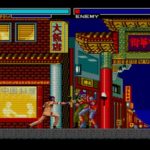
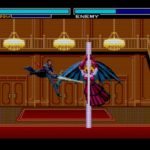
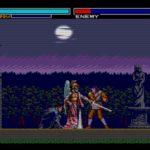
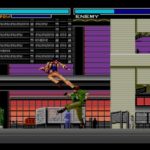
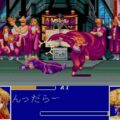
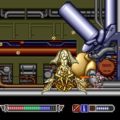
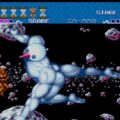
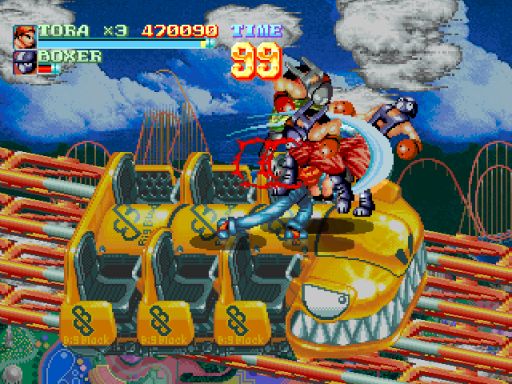
One thought on “Renny Blaster”